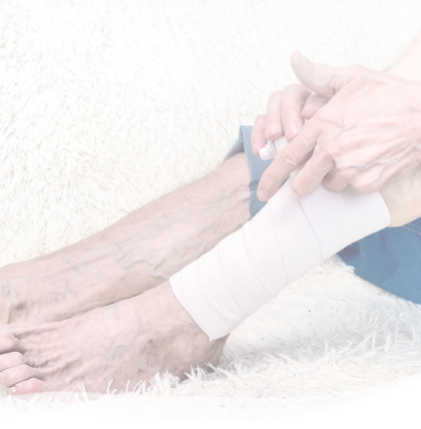Non-Surgical Orthopedic Treatments
At M Bone and Joint, we understand that not all orthopedic conditions require surgery. We offer a comprehensive range of non-surgical treatments to address musculoskeletal issues and promote your overall well-being effectively. Our dedicated team of experts will work closely with you to create a personalized treatment plan tailored to your unique needs.
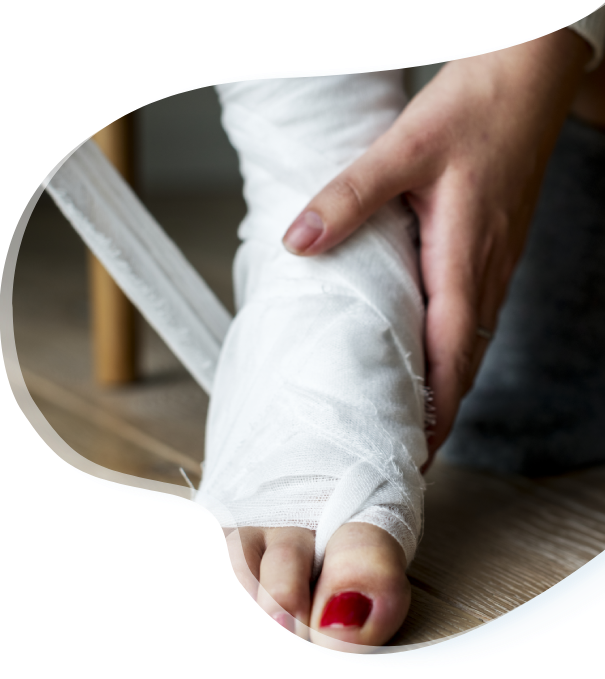
Bracing, Splinting, and Casting
Non-surgical orthopedic treatments, such as bracing, splinting, and casting, are vital components of orthopedic care aimed at managing and treating various musculoskeletal conditions. These interventions provide stability, support, and alignment to injured or affected body parts, promoting healing and functionality. Fractures are commonly treated using casts, splints, or braces, depending on the location and severity of the fracture.
This is a list of fractures that are often treated with these non-surgical orthopedic interventions:
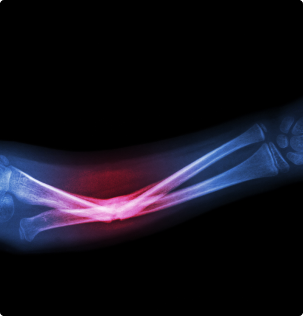
Arm
Fractures
Forearm fractures
Radius and ulna fractures
Humerus fractures
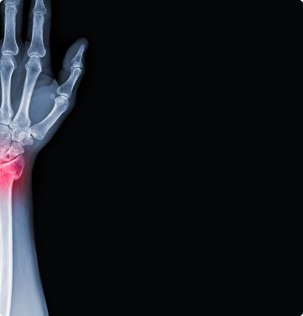
Wrist and Hand
Fractures
Colles' fracture
Scaphoid fracture
Metacarpal fractures
Phalangeal (finger) fractures
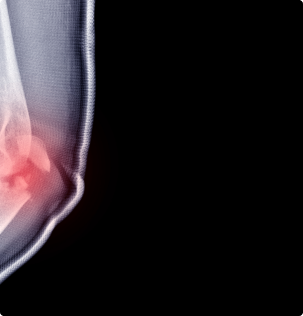
Elbow
Fractures
Olecranon fracture
Radial head fracture
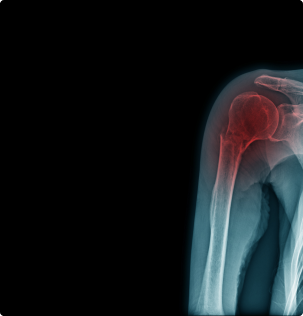
Shoulder
Fractures
Clavicle fractures
Proximal humerus fractures
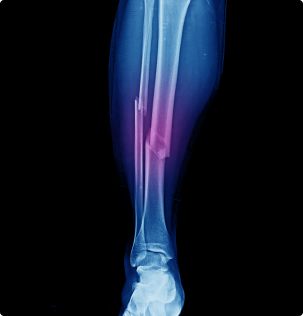
Leg
Fractures
Femoral fractures (thigh bone)
Tibial fractures (shin bone)
Fibular fractures
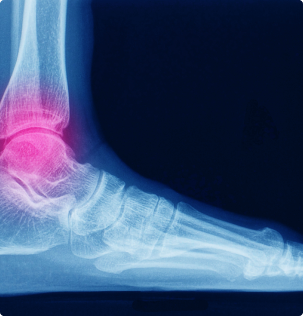
Ankle
Fractures
Lateral malleolus fracture
Medial malleolus fracture
Bimalleolar and trimalleolar fractures
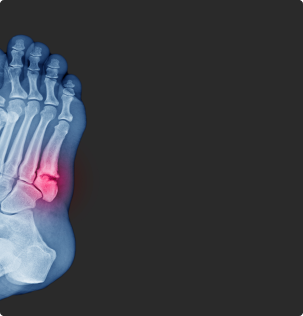
Foot
Fractures
Metatarsal fractures
Phalangeal (toe) fractures
Calcaneus fractures (heel bone)
Orthopedic Support Techniques
Orthopedic injuries and conditions often call for specialized support to aid in the healing process and provide stability. Bracing, splinting, and casting are valuable techniques used in orthopedics to address various musculoskeletal issues. Here, we explore the use, benefits, and considerations of these orthopedic support methods.
Bracing
Bracing involves the use of external devices made of metal, plastic, foam, or elastic materials to support and protect joints and bones. It is commonly used for:
-
Joint Instability: Braces can stabilize and provide support to joints affected by instability, often caused by ligament injuries or degenerative conditions.
-
Post-Surgery Support: After orthopedic surgery, braces can aid in the healing process by providing support to the operated area and promoting proper alignment.
-
Sports Injuries: Athletes frequently use braces to prevent injuries and protect previously injured areas during physical activities.
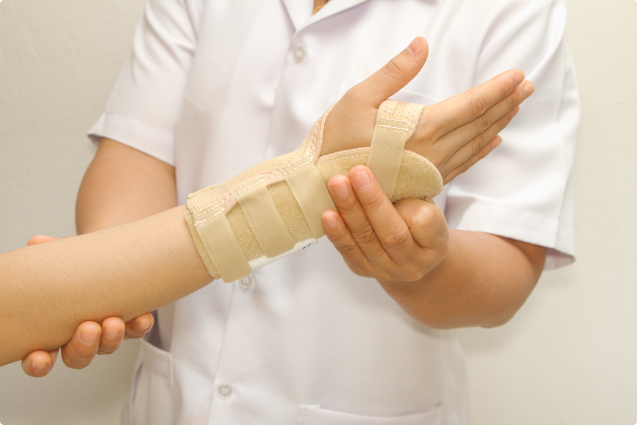
Splinting
Splinting involves immobilizing an injured body part using rigid or semi-rigid materials like metal, plastic, or fiberglass. It is commonly used for:
-
Fractures and Dislocations: Splints provide stability and immobilization to fractures and dislocations while minimizing movement and preventing further damage.
-
Soft Tissue Injuries: Splints can be used to immobilize and support soft tissue injuries like sprains or strains.
-
Post-Surgery Immobilization: After certain orthopedic procedures, splints can aid in immobilizing the operated area during the initial healing phase.

Casting
Casting involves applying a rigid outer shell (usually made of plaster or fiberglass) to a body part to immobilize and support it. It is commonly used for:
-
Fractures: Casting is often used to treat fractures by immobilizing the affected bone to allow proper healing.
-
Correcting Deformities: In some cases, casting is used to gradually correct bone deformities, especially in pediatric orthopedics.
-
Tendon and Ligament Injuries: Casting can help immobilize and support the affected area during the healing process.
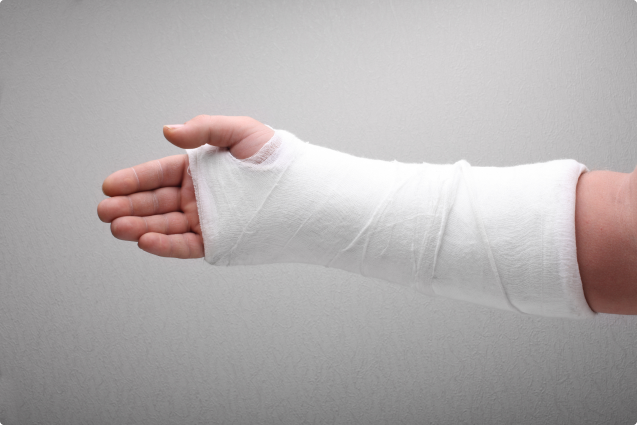
Benefits
Benefits of Bracing, Splinting, and Casting:
-
Stability and Support: These interventions provide stability to injured or affected body parts, facilitating the healing process.
-
Pain Relief: By immobilizing and supporting the injured area, pain and discomfort are often reduced.
-
Faster Healing: Immobilization allows for proper alignment and healing of fractures and injuries.
-
Prevention of Further Injury: Bracing, splinting, and casting help prevent additional damage to already injured areas.
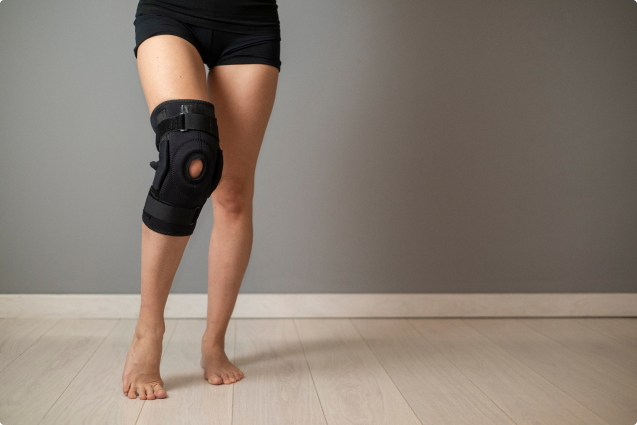
Considerations & Precautions
-
Professional Assessment: A healthcare professional should evaluate and prescribe the appropriate type of brace, splint, or cast based on the nature and severity of the injury or condition.
-
Proper Fitting: Ensuring the brace, splint, or cast fits correctly is crucial for optimal support and healing.
-
Follow Instructions: Adhering to the care instructions provided by the healthcare professional is vital for successful treatment and recovery.
-
Regular Monitoring: Regular check-ups with the healthcare provider are necessary to monitor progress and make any needed adjustments.
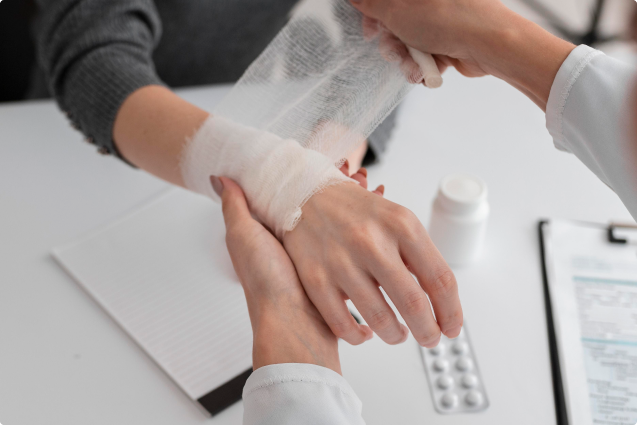
Orthobiologics
Orthobiologics is an emerging field within orthopedic medicine that involves using natural substances derived from the body to promote healing and regeneration of musculoskeletal tissues. Unlike traditional surgical interventions, orthobiologics offer non-surgical alternatives for managing various orthopedic conditions.
Understanding Orthobiologics
Orthobiologics refers to biological substances or therapies that can aid in the healing, regeneration, or replacement of musculoskeletal tissues such as bones, cartilage, tendons, and ligaments. These biological substances are typically derived from the patient's own body (autologous) or from donor sources (allogeneic). Orthobiologics can be used to treat injuries, degenerative conditions, and aid in surgical procedures.
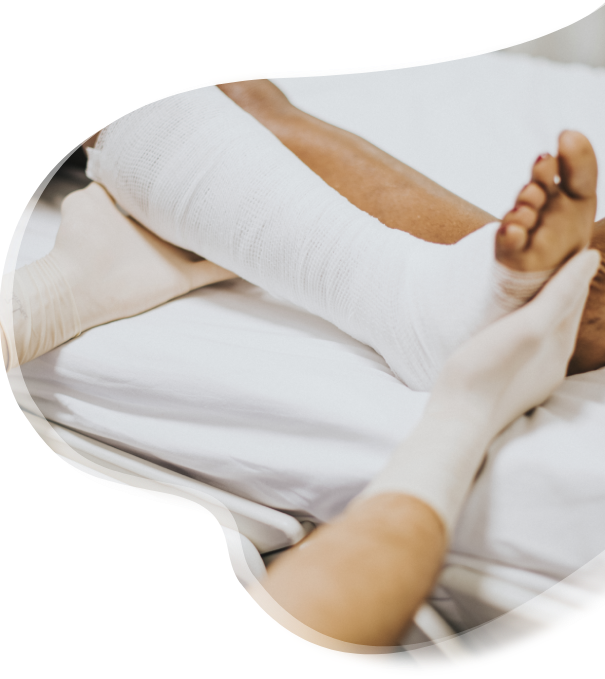
Types of Orthobiologics
Orthobiologics represent a groundbreaking approach to musculoskeletal health and the treatment of orthopedic conditions. These therapies utilize the body's natural healing mechanisms and substances derived from a patient's own body or other sources to aid in tissue repair, regeneration, and pain relief. Discover the diverse array of orthobiologics available, each designed to target specific orthopedic issues and promote a more efficient, minimally invasive healing process.
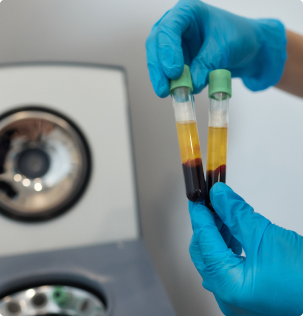
Platelet-Rich
Plasma/ Platelet -
Rich Fibrin (PRP/PRF)
PRP is derived from the patient's blood & contains a concentrated amount of platelets. It is rich in growth factors and can aid in tissue repair and regeneration. Platelet-Rich Fibrin does not use any additives and is a more natural process.
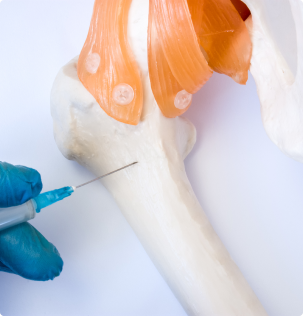
Bone Marrow
Aspirate
Concentrate (BMAC)
BMAC involves extracting bone marrow from the patient, processing it to concentrate the cells, growth factors, & proteins, & then injecting it into the affected area to promote healing and tissue regeneration.
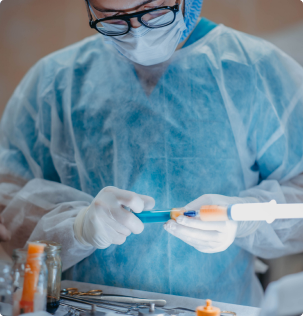
Adipose
-Derived
Cells (ADCs)
BMAC involves extracting bone marrow from the patient, processing it to concentrate the cells, growth factors, & proteins, & then injecting it into the affected area to promote healing and tissue regeneration.
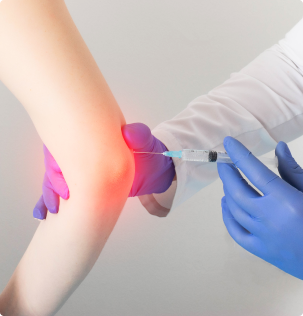
Viscosupplements
Treatment
Viscosupplements are substances injected into joints to lubricate and cushion, providing relief for osteoarthritis by improving mobility and reducing pain.
Applications, Benefits, and
Considerations of Orthobiologics
Here, we explore the applications, benefits, and essential considerations and precautions associated with using orthobiologics in orthopedic care. Consulting our providers is necessary for informed decision-making in your orthopedic care journey.
Applications of Orthobiologics
-
Osteoarthritis: Orthobiologics like PRP and viscosupplements can provide relief and potentially slow the progression of osteoarthritis, particularly in the knee, hip, and other joints.
-
Tendon and Ligament Injuries: PRP and BMAC injections can aid in the healing of tendons and ligaments, especially for conditions like tendinitis and ligament sprains.
-
Fracture Healing: Some orthobiologics, especially those derived from bone marrow, can support and accelerate the healing of fractures.
-
Cartilage Repair: Orthobiologics are being researched and used for cartilage repair procedures, aiming to enhance healing and regeneration in damaged cartilage.
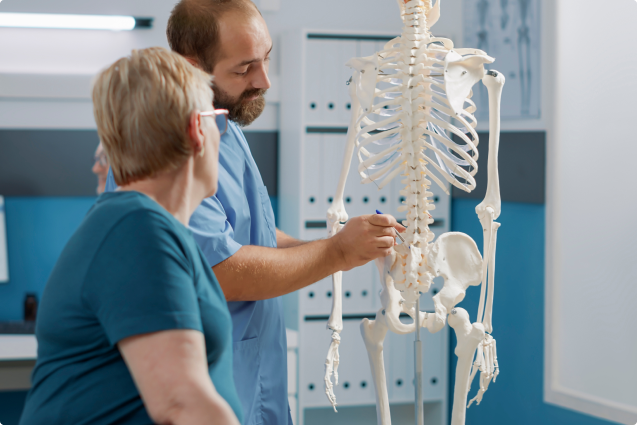
Benefits of Orthobiologics
-
Minimally Invasive: Orthobiologic treatments are generally minimally invasive, often involving injections rather than surgical procedures.
-
Natural Healing: Orthobiologics harness the body's natural healing mechanisms, aiding in tissue repair and regeneration.
-
Reduced Recovery Time: Due to their non-surgical nature, orthobiologics typically have shorter recovery periods compared to surgical interventions.
-
Potentially Lower Risk of Complications: Non-surgical approaches often come with fewer risks and complications compared to surgical procedures.
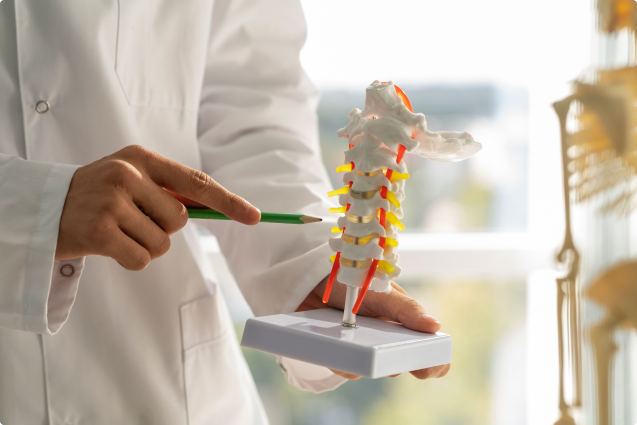
Considerations & Precautions
-
Consultation: Consult with an orthopedic specialist to determine if orthobiologic treatments are suitable for your specific condition.
-
Potential Effectiveness: The effectiveness of orthobiologics can vary based on the individual, the type and severity of the condition, and the specific orthobiologic used.
-
Cost and Insurance Coverage: Understand the costs associated with orthobiologic treatments and check if your insurance covers these procedures.
-
Potential Side Effects: Although rare, potential side effects may include injection site pain, swelling, or infection.
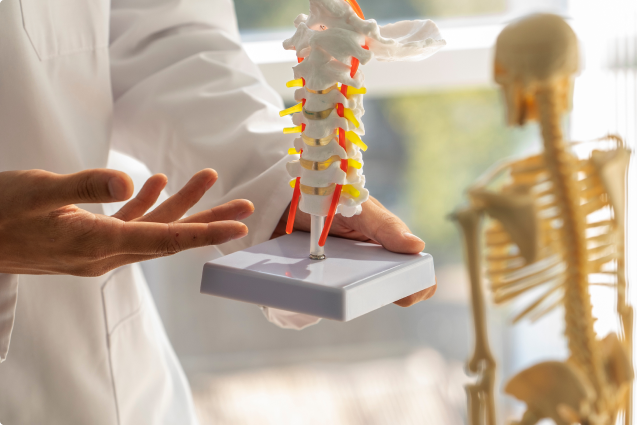
Extracorporeal Shockwave Treatment for Musculoskeletal Conditions: A Revolutionary Approach to Pain Relief
Extracorporeal Shockwave Treatment (ESWT) is an innovative and non-invasive therapeutic technique that has gained popularity for its effectiveness in managing various musculoskeletal conditions. ESWT presents a promising alternative for individuals suffering from various musculoskeletal conditions, offering effective pain relief and promoting healing without invasive procedures. If you're considering ESWT, consult a healthcare professional to discuss your options and determine if this treatment is suitable for you. Prioritize your well-being and seek expert advice for any musculoskeletal concerns.
Understanding ESWT
Extracorporeal Shockwave Treatment (ESWT) involves the use of high-energy acoustic waves to target affected areas in the body. These shockwaves generate mechanical stress, promoting healing and tissue regeneration. ESWT can be administered in focused or radial forms, both aiming to alleviate pain and stimulate the body's natural healing mechanisms.
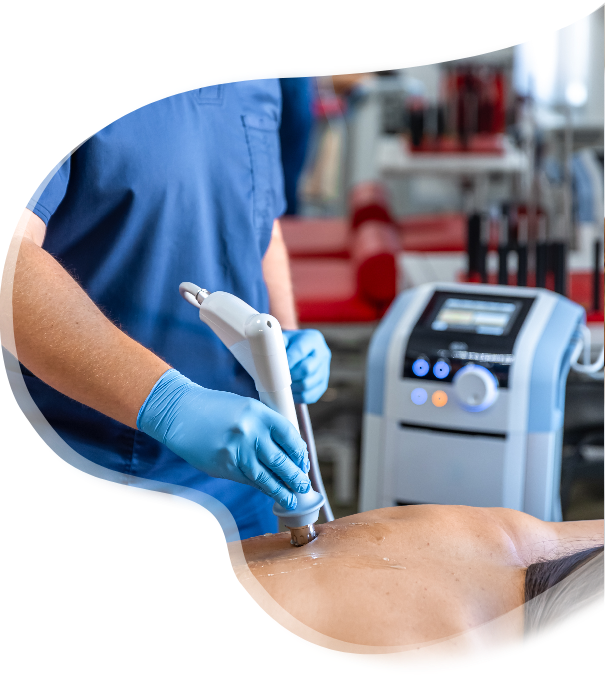
Discover the Power of Shockwaves for Healing
Extracorporeal Shockwave Treatment (ESWT) delivers high-energy shockwaves precisely to the source of your pain and discomfort, stimulating healing and offering relief where it's needed most. At M Bone and Joint, we're dedicated to bringing you the most advanced solutions in orthopedics, and ESWT is at the forefront of our commitment to your well-being.
Applications of ESWT
ESWT has shown some promising results in treating a wide array of musculoskeletal conditions, including:
-
Plantar Fasciitis: ESWT is commonly used to treat heel pain caused by plantar fasciitis. The shockwaves help break down scar tissue and stimulate healing in the affected area.
-
Tennis Elbow (Lateral Epicondylitis): ESWT can effectively reduce pain and inflammation in the tendons around the elbow, providing relief for those suffering from tennis elbow.
-
Achilles Tendinopathy: Patients with Achilles tendon issues can benefit from ESWT, which promotes healing and regeneration of the damaged tendon.
-
Calcific Rotator Cuff Tendinitis: ESWT has been shown to be effective in breaking down calcifications and reducing pain in the shoulder associated with calcific rotator cuff tendinitis.
-
Hip Pain: ESWT can be used to manage hip pain, particularly in conditions like trochanteric bursitis and avascular necrosis.
-
Muscle Injuries: ESWT can aid in the healing of various muscle injuries by promoting blood circulation and tissue repair.
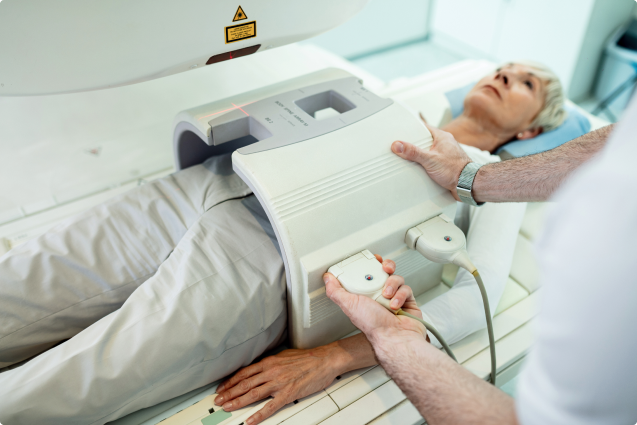
Benefits of ESWT
-
Non-Invasive: ESWT is a non-invasive procedure, minimizing the risks and complications associated with surgery.
-
Pain Relief: ESWT is believed to alleviate pain by stimulating the body's natural healing processes and reducing inflammation.
-
Faster Healing: The treatment may accelerate the healing of injured tissues and promote tissue regeneration.
-
Improved Functionality: Many patients experience enhanced functionality and mobility in the treated areas.
-
No Downtime: ESWT is an outpatient procedure, and patients can resume their regular activities shortly after treatment.
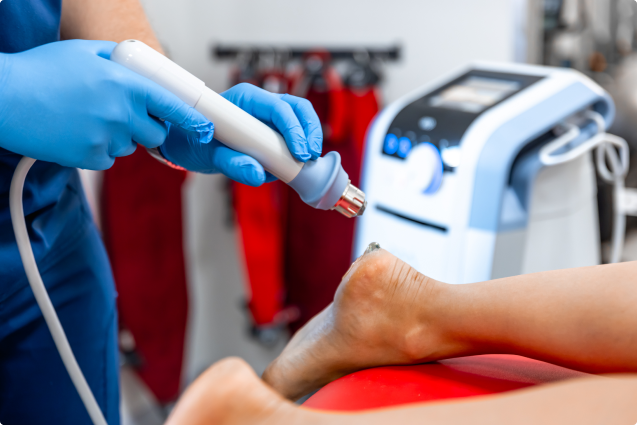
Considerations & Precautions
-
Consultation: Consult with a healthcare professional to determine if ESWT is suitable for your condition and medical history.
-
Possible Discomfort: Some patients may experience mild discomfort during the procedure, but this is usually manageable.
-
Multiple Sessions: Depending on the severity of the condition, multiple ESWT sessions may be required for optimal results.
-
Risks: Although rare, risks may include bruising, swelling, or temporary numbness in the treated area.
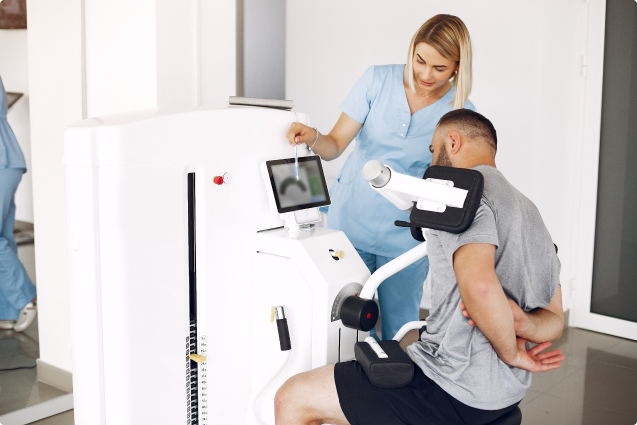
Injections
Musculoskeletal conditions, encompassing a wide range of disorders affecting muscles, bones, tendons, ligaments, and joints, often bring discomfort and hinder daily activities. Injections are a valuable treatment option to manage pain, inflammation, and mobility issues associated with various musculoskeletal conditions. Some of these injections are covered with insurance.
Types of Injections
Orthopedic injections represent a dynamic and adaptable approach to managing orthopedic conditions. These treatments are minimally invasive and designed to target particular issues with precision. Here, we explore a variety of orthopedic injections, each with its unique applications and benefits:
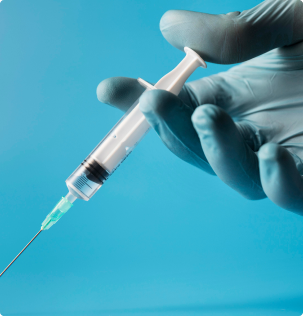
Corticosteroid
Injections
Corticosteroids are potent anti-inflammatory medications that can be injected directly into the affected area to reduce inflammation and alleviate pain.
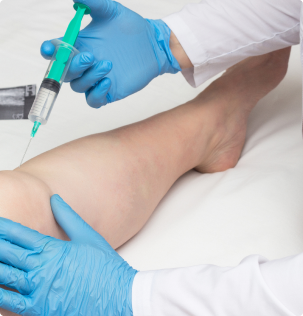
Hyaluronic
Acid Injections
Hyaluronic acid injections are used to supplement the natural joint fluid and provide lubrication to the joint. They are often utilized for managing knee osteoarthritis.
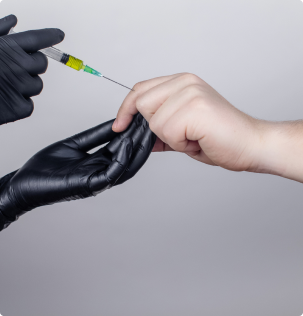
Platelet-Rich
Plasma Injections
PRP injections involve extracting and concentrating the patient's blood platelets and injecting them back into the affected area. This stimulates tissue repair and can be used for conditions such as tendon injuries and osteoarthritis.
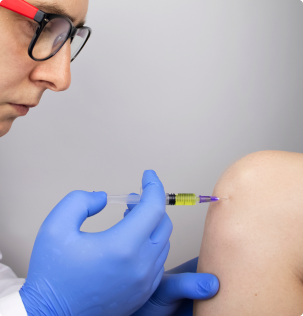
Visco
supplementation
Viscosupplementation involves injecting a thick fluid called hyaluronic acid into the knee joint. It helps to lubricate the joint and act as a shock absorber, providing relief for osteoarthritis patients.
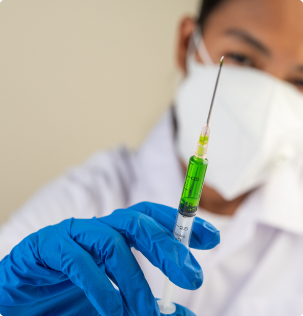
Prolotherapy
Injections
Prolotherapy involves injecting an irritant solution (often dextrose) into damaged ligaments or tendons to stimulate the body's natural healing response. It's used for chronic musculoskeletal pain.
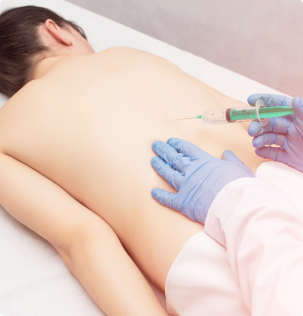
Botulinum Toxin
(Botox) Injections
Botulinum toxin injections can be used for conditions like muscle spasms, chronic migraines, and cervical dystonia by temporarily relaxing the targeted muscles.
Optimizing Orthopedic Injections
Understanding the benefits, considerations, and precautions of orthopedic injections is crucial for making informed decisions about your treatment. Whether you're seeking relief from chronic pain, managing an orthopedic condition, or recovering from an injury, these therapies can be transformative.
Benefits of Injections
-
Pain Relief: Injections can provide effective and targeted pain relief, allowing patients to manage their discomfort and engage in rehabilitation exercises.
-
Reduced Inflammation: Injections containing anti-inflammatory agents can significantly reduce inflammation at the injection site, improving mobility and comfort.
-
Non-Invasive or Minimally Invasive: Most injection procedures are minimally invasive, offering a viable alternative to surgical interventions.
-
Quick Recovery: Recovery time is generally short, and patients can resume their daily activities shortly after the procedure.
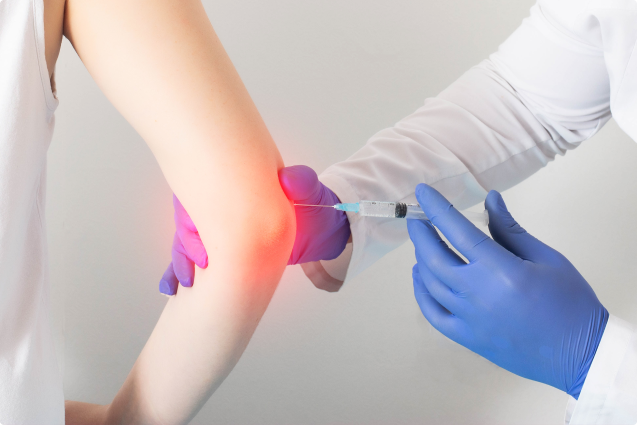
Considerations & Precautions
-
Consultation: Always consult with a healthcare professional to determine the most suitable injection for your specific musculoskeletal condition.
-
Allergies and Sensitivities: Inform your healthcare provider of any allergies or sensitivities you may have to medications or substances.
-
Side Effects: Be aware of potential side effects such as pain at the injection site, infection, allergic reactions, or nerve damage. Report any unusual symptoms to your healthcare provider.
-
Rehabilitation: Injections should be complemented with appropriate rehabilitation exercises and lifestyle modifications for optimal results.
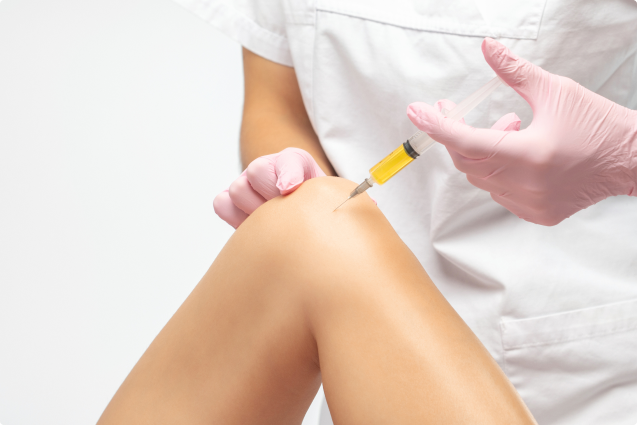
Contact Us Now
Business Hours
- Monday: 9:00 AM – 6:00 PM
- Tuesday: 9:00 AM – 6:00 PM
- Wednesday: 9:00 AM – 6:00 PM
- Thursday: 9:00 AM – 6:00 PM
- Friday: 9:00 AM – 6:00 PM
- Saturday: Open Selected Saturdays
- Sunday: Closed


